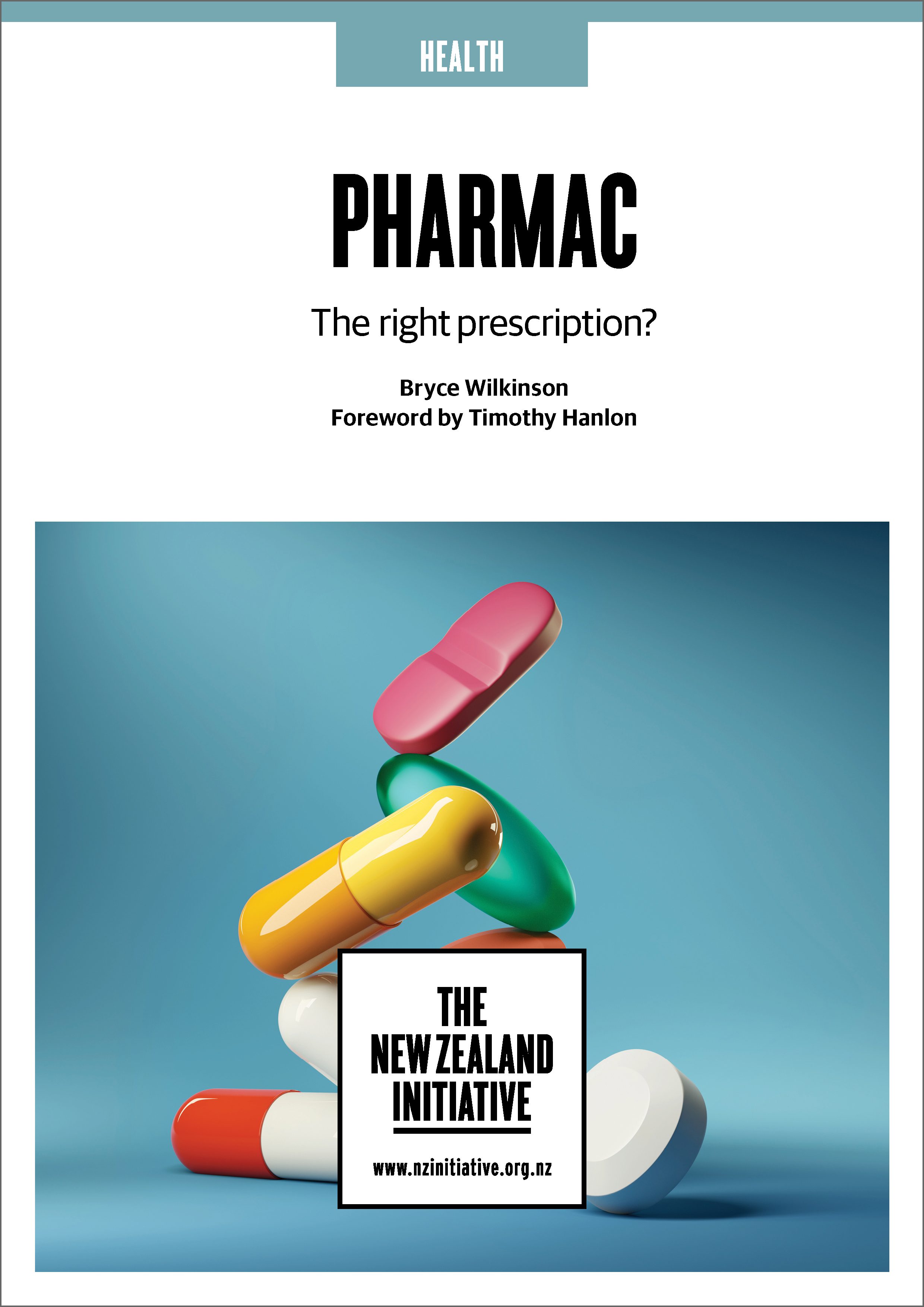This report examines the strengths and weaknesses of New Zealand’s arrangements for prescription medicines. Central to them is the Pharmaceutical Management Agency, Pharmac, a Crown entity. Among OECD member countries, Pharmac is “unique” in combining “clinical, economic and commercial aspects, and decision-making within a fixed budget for subsidising pharmaceuticals.”1 Other member countries commonly separate these roles and may have more open-ended budgets.
Perhaps the greatest strength in New Zealand’s arrangements compared to elsewhere is that, from its inception in 1993, Pharmac has focused on achieving radically lower prices for many pharmaceutical medicines within a tight budget. For a time at least, those low prices attracted envious international attention. That focus reflects the clarity of its statutory objectives.
Under Pharmac’s watch, the annual per capita number of filled prescriptions in New Zealand has risen markedly as unit medicine prices have fallen. Overall, pharmaceutical subsidy spending has not risen relative to GDP. In contrast, Australia is spending a lot more than New Zealand absolutely and as a percentage of GDP in subsidising prescription medicines. Yet, annual filled prescriptions per capita in Australia are now appreciably lower than in New Zealand. Prior to 2010, it was the other way around.
It is an open question whether Pharmac can sustain its superior low-price performance. It is not systematically benchmarking its price performance against that of top medicine procurers in other countries. District Health Boards (DHBs), the Ministry of Health and Treasury should be ensuring that Pharmac does so.
Another concern is that a fixed subsidy budget and a focus on low price might be at the expense of user choice and adoption of innovative new medicines. Pharmac’s ability to fund new medicines each year depends considerably on its ability to achieve lower prices each year for some existing medicines.
The most serious weakness with current arrangements is that no one really knows whether they are improving health outcomes, let alone the overall wellbeing of Kiwis. The health gain relative to not having the medicine is assessed, but the degree to which it would be consumed if not subsidised is not known.
The report rebuts the view that to fail to subsidise a medicine is to deprive New Zealanders of its benefits. It finds no undue non-price barriers to New Zealanders’ access to registered medicines. Why subsidise what medical professionals might advise people to buy anyway?
The lack of clarity about what the subsidies are meant to achieve creates an insoluble problem for public administration and accountability. It means Pharmac cannot do a meaningful wellbeing assessment of its subsidy decisions. Nor can anyone else.
Subsidies for people not in financial need are costly. They invite over-prescribing and waste. Pharmac’s current 100% subsidy policy and the Ministry of Health’s policy of limiting the standard prescription charge to $5 heightens the concern. The system creates expectations that a limited budget can never satisfy. Some suppliers, prescribers and consumers will always be aggrieved.
The subsidies disempower consumers. Consumers are no longer the piper calling the tune. Government provision displaces more flexible private arrangements. Prescriptions are biased towards the subsidised medicines that may not otherwise be the best option for individuals. To keep spending from blowing out, governments must limit access.
Nor is there a general affordability problem. The average annual cost per household of the government subsidies for prescription medicines is about $1040. Most families could pay for this out-of-pocket even if taxes were not lowered commensurately. It is cheaper for people to pay their bills directly rather than through the tax system. Private health insurance policies exist to pool the risks of much higher costs in any given year. The coverage is limited by fine print in the policies, but coverage under Pharmac is limited too.
Cash is generally the best form of assistance for those in financial need. Cash is empowering and enhances choice and flexibility relative to assistance in kind. Some private insurance policies provide a cash option.
For such reasons, there should be a presumption against subsidising those not in financial need and in favour of a cash option for those in financial need. Future reviews of the subsidy budget should clearly identify the public policy reasons for departing from this presumption.
The same presumption should be applied to future reviews of the maximum prescription charge for those not in financial need. Fiscally constrained governments in a post-Covid-19 world will need to reprioritise spending.
One aspect meriting further consideration is the degree to which less reliance on taxes to pay for medicines might reduce Pharmac’s commercial clout. A gradual rather than radical shift towards less reliance on the tax system would manage this risk.
A deep consequence of the failure to identify the problem for which the subsidies are the remedy is that Pharmac does not know what arrangements people would have made to obtain the medicines they need in the absence of subsidies.
By default, Pharmac’s decisions have a therapeutic efficiency health system focus, with a strong fiscal bias. The pressures on Pharmac to broaden the factors it takes into consideration, such as socio-economic disparities, do not address the deep problem but rather risks exacerbating controversy by making its decisions more clearly political rather than technical. The trend could undermine Pharmac’s evidence-based rigour and focus. A better option might be to let Pharmac keep on doing what it does well – maximising potential therapeutic efficacy within a limited budget.
Click here to download the two-page summary of Pharmac: The right prescription?





